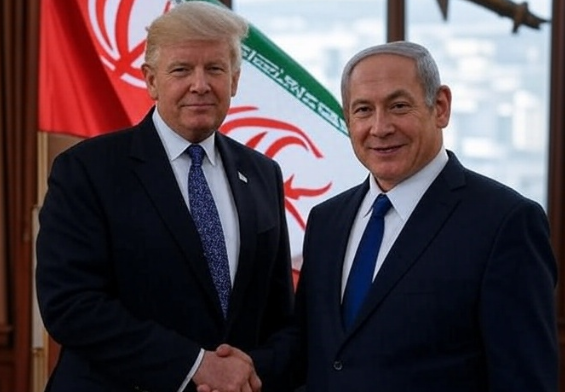Israel Struggles to Neutralize Iranian Nuclear Program:As Israel intensifies its military campaign against Iran’s nuclear infrastructure, one target remains out of reach — the heavily fortified Fordow nuclear facility. Built deep inside a mountain, Fordow is critical to Iran’s uranium enrichment program, posing a significant threat to Israel’s security. Despite relentless airstrikes, Israel lacks the specialized bunker buster bombs and heavy bombers required to destroy the site. Seeking U.S. assistance, Israel has proposed a joint operation, as tensions escalate and the conflict threatens to spiral into a broader war.
Israel Struggles to Neutralize Iranian Nuclear Program
As the conflict between Israel and Iran escalates, the world watches closely, concerned about the dangerous implications of the growing tensions. Every day, social media is filled with charged statements like Ayati’s tweet, “Death to Israel. I want to see no nuclear weapon in Iran.” Meanwhile, Israel continues its relentless air strikes on Iran, targeting nuclear and military infrastructure. However, despite these repeated attacks, it is becoming increasingly clear that Israel may not achieve its ultimate goal of fully dismantling Iran’s nuclear capabilities unless it manages to neutralize one critical target — the Fordow nuclear facility.
The Fordow facility stands at the very heart of Iran’s nuclear program. It is strategically built deep inside a mountain, heavily fortified, and shielded by advanced air defense systems. This site is one of Iran’s two primary uranium enrichment locations, where uranium is enriched up to 60% purity—just below the threshold required to develop a nuclear weapon. The fear in Israel is that as long as Fordow remains operational, even after multiple air strikes, Iran’s nuclear threat will persist, leaving Israel’s mission incomplete.
The core challenge for Israel lies in Fordow’s formidable defenses. Conventional air strikes are insufficient to destroy such a deeply buried and fortified structure. What Israel requires are specialized munitions known as “bunker buster” bombs. These bombs are uniquely designed to destroy underground bunkers and heavily reinforced structures. Equipped with delayed fuses, they penetrate deep into their target before detonating, maximizing their destructive power.
Bunker busters come in various sizes and capacities. These bombs typically weigh between 4,000 to 30,000 pounds and are capable of penetrating up to 30 meters of earth or 6 meters of reinforced concrete. For example, the GBU-28 and GBU-37 bunker buster bombs each weigh between 4,000 and 5,000 pounds. On the heavier end of the spectrum is the GBU-57, the largest bunker buster bomb, which weighs a staggering 30,000 pounds and can penetrate up to 200 feet of reinforced concrete—enough to potentially cripple even the most deeply buried facilities like Fordow.
Recognizing its own limitations, Israel has reportedly reached out to the United States for assistance. According to an Axios report citing two officials, Israeli authorities have proposed a joint military operation with the Trump administration specifically aimed at destroying Fordow. The Israeli ambassador to the US echoed this sentiment during an interview with Fox News, emphasizing that Israel’s ongoing military campaign must ultimately include the destruction of Fordow, which he described as posing the greatest existential threat to Israel.
However, Israel faces a critical gap in its military capabilities. It currently lacks both the bunker buster bombs required for such a mission and the heavy bomber aircraft capable of delivering them. The United States, on the other hand, possesses B-2 stealth bombers that are specifically designed for such high-risk missions. The B-2 strategic stealth bombers can evade advanced air defense systems, conduct precision strikes, and are capable of carrying the massive 30,000-pound GBU-57 bunker buster bombs. These bombers are potentially the only realistic option to strike at the fortified heart of Iran’s nuclear program and inflict significant, lasting damage.
As diplomatic talks stall and military operations intensify, the fate of Fordow has become a focal point of this dangerous standoff. The next phase of this conflict may well hinge on whether Israel can secure the military support and equipment necessary to eliminate this deeply buried threat. The world remains on edge as the stakes rise in this highly volatile confrontation between two regional powers.
Disclaimer:
This article is based on publicly available information and media reports. The content is intended for informational purposes only and does not reflect any political stance or endorsement. The situation described is subject to ongoing developments, and readers are advised to follow official sources for the latest updates.

